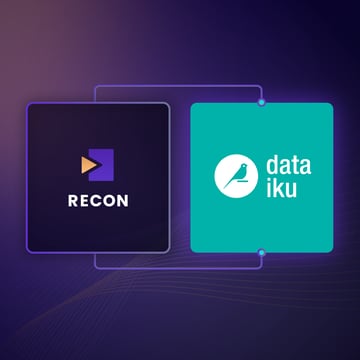The Expanding Role of Red Teaming in Defending AI Systems
This article was originally published by Ruchir Patwa for Tech News World.
AI red teaming — the practice of simulating attacks to uncover vulnerabilities in AI systems — is emerging as a vital security strategy.
Traditional red teaming focuses on simulating adversarial tactics to identify vulnerabilities in static systems — applications built on predictable coding frameworks. While challenging, these engagements rely on decades of collective experience and a well-understood threat landscape. Artificial intelligence systems, meanwhile, present fundamentally different challenges.
Unlike traditional applications, AI systems are dynamic, adaptive, and often opaque, making vulnerabilities harder to identify. The threats targeting these systems are also unique, ranging from adversarial inputs that manipulate model behavior to malicious modifications of the models themselves. Understanding these differences is critical for securing AI-powered operations.
Understanding AI Red Teaming
AI red teaming systematically probes AI systems to identify vulnerabilities and potential exploits. Like traditional red teams, AI red teams emulate adversarial tactics to uncover weaknesses before they can be exploited. However, the challenges in AI environments are amplified by model complexity, novel attack vectors, and the high stakes of failure.
Red teaming spans critical areas. Adversarial machine learning (ML) techniques involve crafting inputs to deceive models into making incorrect predictions. Model file security focuses on identifying vulnerabilities in the serialized files that store machine learning models, ensuring they can’t be exploited as vectors for malicious code. Operational security examines risks within AI workflows and supply chains, pinpointing exposure points adversaries might exploit.
Why AI Red Teaming Is Critical
The adoption of AI has transformed industries, introducing significant risks alongside benefits. Models trained on sensitive data, deployed in distributed environments, or integrated into decision-making processes create a broader attack surface. Adversaries can manipulate inputs through vulnerabilities in large language models (LLMs), leading to unintended outputs or actions.
AI models, often valuable intellectual property, are also vulnerable to theft or sabotage, leading to severe business impacts. Maliciously crafted models can even act as malware, leaking sensitive data when deployed.
For example, an attacker might embed harmful code within a serialized model file. If a machine learning engineer unknowingly loads the file, the attacker could gain access to sensitive systems. This threat is particularly severe in industries like healthcare and finance, where compromised models could directly impact operations and compliance.
Modernizing Red Teaming for AI
Traditional cybersecurity measures often fail to address AI-specific threats. Unlike fixed codebases, AI models are dynamic and adaptive, introducing unpredictable vulnerabilities that require innovative testing strategies.
AI attack vectors often involve reverse engineering or adversarial attacks that undermine predictions. Additionally, tools designed to secure AI systems can sometimes be weaponized for offensive use, requiring a deep understanding of their dual-use capabilities.
These challenges underscore the necessity of AI red teaming as a specialized cybersecurity discipline. By focusing on AI systems’ unique vulnerabilities, red teams can identify risks that traditional approaches may overlook, ensuring a more robust defense.
Given the growing use of AI in business-critical applications, AI red teaming is emerging as an essential cybersecurity strategy. This process requires continuous adaptation to evolving threats. Integrating AI red teaming into an organization’s security framework reduces catastrophic model failures, builds stakeholder confidence in AI initiatives, and keeps organizations ahead of adversaries.
Best Practices To Get Started With AI Red Teaming
To integrate AI red teaming into an enterprise security strategy, consider these best practices for building a robust and proactive approach to safeguarding AI systems.
Assemble a Multidisciplinary Team
An effective AI red team requires AI experts to address model architecture and vulnerabilities, cybersecurity professionals to tackle adversarial tactics, and data scientists to analyze risks like poisoning or unauthorized manipulation. This combination ensures a comprehensive approach to securing the AI lifecycle.
Identify and Prioritize Critical AI Assets for Testing
Focus on assets that handle sensitive data, perform critical functions, or are publicly accessible. Catalog models, data pipelines, and APIs, prioritizing systems like fraud detection or customer authentication where vulnerabilities could have significant consequences.
Collaborate With Blue Teams
Red and blue teams must work together to strengthen defenses. While red teams simulate attacks to uncover vulnerabilities, blue teams focus on detection, response, and mitigation. Sharing findings from red teaming helps improve blue team capabilities and align strategies against real-world threats.
Use Specialized Tooling
Equip your red team with tools tailored to AI environments, including frameworks for adversarial inputs, reverse engineering model embeddings, or simulating API attacks. These tools help target AI systems more effectively and uncover weaknesses that traditional security testing might miss.
Implement Automated Testing
For organizations managing large-scale AI deployments, automated red teaming tools streamline vulnerability detection across multiple models and pipelines, enabling comprehensive coverage without overburdening teams.
Ensure Compliance With Privacy Guidelines
Establish protocols to ensure red teaming activities meet privacy and regulatory standards. This includes anonymizing sensitive data in testing environments to safeguard personal and proprietary information. Proper compliance not only protects your organization legally but also ensures ethical testing practices.
Making Red Teaming Part of AI Strategy
By adopting a proactive approach to AI security with red teaming, businesses can uncover hidden vulnerabilities, reduce risks, and build resilient systems. Compared to static applications, the dynamic nature of AI systems makes offensive testing even more important for safeguarding operations, maintaining stakeholder trust, and driving innovation with confidence.
Find a topic you care about
Get the best of Protect AI Blogs and News delivered to your inbox
Subscribe our newsletter for latest AI news. Let's stay updated!




